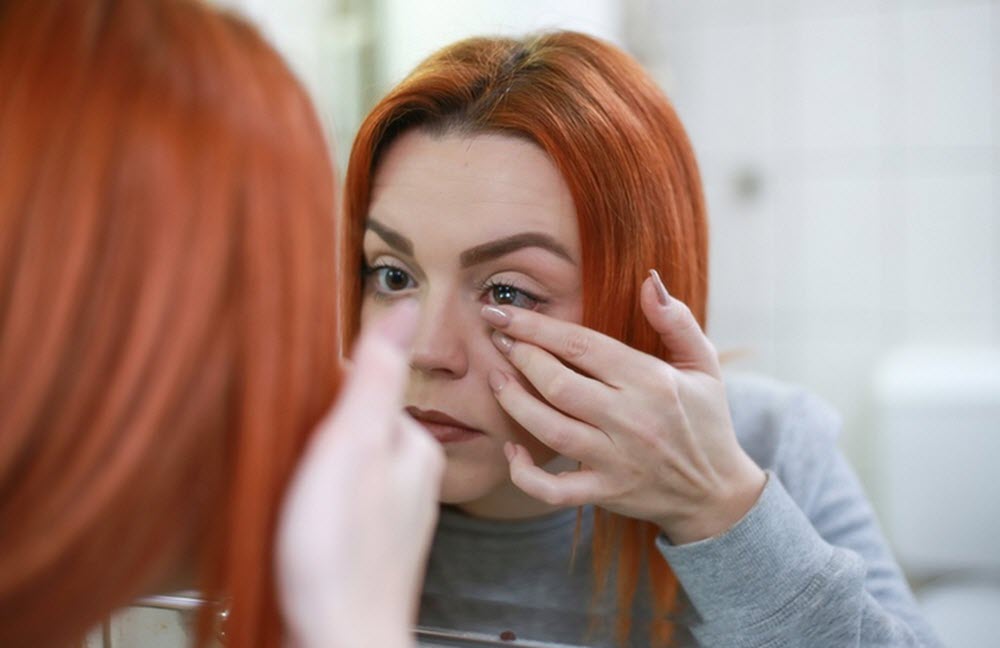In the 21st century, a lot of land winnings have been made in the field of medical contact lenses that do other things than help us see better. Below, we will take a look at three research projects that are currently going on in different parts of the world.
Contact lenses that will help people with diabetes
For a person with diabetes, knowing their blood sugar levels is of imperative importance. The quicker a suspicious deviance is detected, the quicker the person can remedy the situation – and time is of essence when it comes to unhealthy blood sugar levels.

The standard method for finding out your blood sugar level is by analysing a small blood sample, but what if there was another method? One that did not require any blood sample?
Researchers at the Ulsan National Institute of Science and Technology are working to perfect a contact lens capable of measuring a person´s blood sugar levels – and they have already come really far ahead. In a project led by Jiun park, the researchers have fitted the required technology to a contact lens that is flexible and comfortable to wear, which sets it apart from earlier forays into this area. In addition to just measuring blood sugar levels, the invention can also emit an alarm signal any time the blood sugar level is approaching a dangerous level.
Contact lenses that emit medicine for the eye
Johnson & Johnson has developed a disposable contact lens that contains the medicine ketotifen and will dispense it directly into the eye. At the time of writing, the lens has made it through phase three clinical trials, but it not approved for consumer use. If it gets approved, it is predicted to become a popular choice among persons with allergies who currently need to take out their contact lenses before applying antihistamines eye drops. (Ketotifen is an antihistamine.) Having the antihistamine come from the lens will be much easier and more convenient than having to remove your lenses and then apply medicine from an eye-dropper.
People with allergies often get reactions from the eyes, which become red, swollen, itchy and tear-filled, so it is no surprise that Johnson & Johnson have decided to develop something like this. Still, the possible applications go beyond allergies. If the Johnson & Johnson ketotifen contact lens gets approval, it might become the first in a long line of contact lenses that comes filled with medicine.
Contact lenses that stop corneal melting
Corneal melting is a serious medical condition that can lead to blindness. It is typically caused by the immune system producing too much of certain zinc-dependent enzymes called matrix metalloproteinases (MMPs) which leads to progressive loss of corneal stroma. A lot of different things can trigger the immune system to behave like this, including bacteria, fungi, chemical burns, or surgery. Several autoimmune conditions are also linked to corneal melting, such as rheumatoid arthritis, lupus and Stevens-Johnson syndrome.
Now, researchers at the University of New Hampshire have developed a hydrogel contact lense which removes extra zinc from the cornea. The fact that it can act directly on the eye is a big benefit, because sending in a general zinc-removing medicine into the whole human body can lead to some serious side effects.
“Most of the current MMP inhibitors used to treat this condition work by binding to the zinc ions within the MMPs,” says Kyung Jae Jeong, assistant professor of chemical engineering at the University of New Hampshire.“However, once injected into the body, the MMP inhibitors travel through the blood stream and entire body and can cause severe side effects because they are binding with and deactivating the zinc ions in other tissue. Our hydrogel works entirely differently because it is localized, just in the eye, and deactivates MMPs by eliminating the zinc ions from the cornea. And since it would be a contact lens, if there were any issues, the patient would simply remove it.”
This article was last updated on: January 30, 2023

